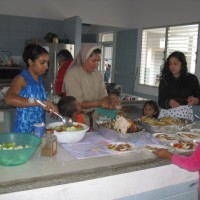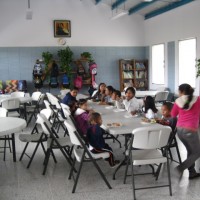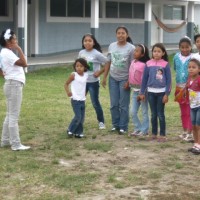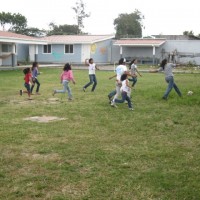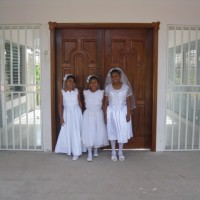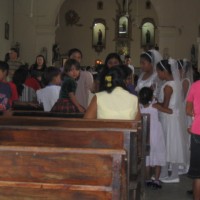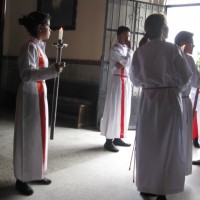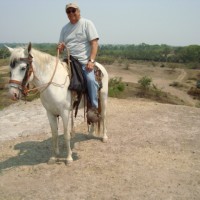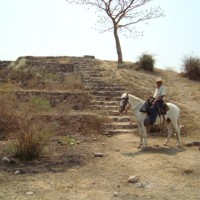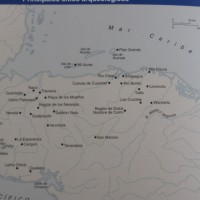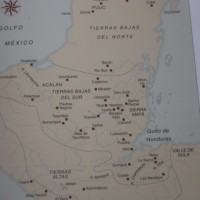I have so many pictures of our awesome 6th Annual Thanksgiving Day and our 1st Annual celebration in the children’s new home but so little space for this brief entry. One has only to look back in this photo record to our First Annual Thanksgiving in 2009 to see the progress that has been made in the children’s living conditions since moving into our new quarters in March of this year. All the children are doing well in school; they’re happy and well-adjusted. They have so much contagious energy and good cheer it rejuvenates me to be around them. They are truly a living fountain of youth.
Monthly Archives: November 2014
Present Day Lencas
The Lenca people lived in peace for thousands of years until the arrival of the thieving, murdering Spaniards in the mid-1500s. These European invaders claiming to bring the word of their christian god proceeded to enslave the indigenous inhabitants and to steal their land, gold, silver, jade and ultimately tried to stifle their humanity. The criminals were finally forcibly expelled after 300 years of physical and psychological abuse. Within that time they superimposed their vicious superstitious religious dogma onto a captive native people’s equally superstitious supernatural belief system and claimed justification because it was for their salvation from pagan evil. It remains to be seen which belief system is more evil. The Lenca remain very spiritual and survived the abuse, many having escaped into high mountain villages. One such village is Guajiquiro from where many of the Hogar San José’s children originate. Three of our Lenca adolescents here celebrating their First Communion, one of the church’s sacraments.
Me, My Horse And The Ruins
When the Maya Civilization established their southernmost city-state, Copan, on Honduras’ northern frontier the Lenca civilization was already established. View the above archeolological sites of Maya cities in the present-day Yucatan, Guatemala and Belize alongside the Lenca sites in greater Honduras. Don Ruben lent me his horse and he rode in on his jackass to the El Chircal site near Yarumela. That’s me astride the horse on top the only excavated pyramid site near the river on 2 April 2009. And that’s me with the horse and the jackass on top of El Cerrito, the tallest mound that covers the tallest pyramid as seen on the map. The El Chircal Sitio Arqueológico today looks nothing like the above pics, five years later. The site is now overgrown with trees and bushes and weeds. When I took the Hogar’s children there several weeks ago one wouldn’t even know it existed.
Lenca Ruins

 The ProtoLenca Indigenous folks who occupied most of Honduras but especially the Comayagua Valley where I live were a PreMayan group of people. Their civilization was not as sophisticated as the Maya but their main cultural site near Yarumela, which is a colonia of the La Paz Municipalidad, known as El Chircal was the epicenter for the Honduras Lenca people more than 3,000 years ago. The Honduras Institute of Anthropology and History confirms that there are fifteen covered mounds with stone structures underneath in an area encompassing 30 hectares, the largest structure 20 meters high and 7,000 square meters at its base; structures as noted in an artist rendition above. Numerous smaller stone structures have been verified as well. The only stone pyramid at present partially visible is the top of one near the river onto which I rode my horse in 2009. I also rode to the top of the highest covered mound known as “El Cerrito.” Within 10 kilometers of where I live is an unexplored archeological treasure. As a Historian I yearn to explore further. A scientific coordinated university effort could result in a national archeological park instilling pride similar to Las Ruinas de Copan, the southernmost Maya city-state and now an archeological park on Honduras’ nothern border.
The ProtoLenca Indigenous folks who occupied most of Honduras but especially the Comayagua Valley where I live were a PreMayan group of people. Their civilization was not as sophisticated as the Maya but their main cultural site near Yarumela, which is a colonia of the La Paz Municipalidad, known as El Chircal was the epicenter for the Honduras Lenca people more than 3,000 years ago. The Honduras Institute of Anthropology and History confirms that there are fifteen covered mounds with stone structures underneath in an area encompassing 30 hectares, the largest structure 20 meters high and 7,000 square meters at its base; structures as noted in an artist rendition above. Numerous smaller stone structures have been verified as well. The only stone pyramid at present partially visible is the top of one near the river onto which I rode my horse in 2009. I also rode to the top of the highest covered mound known as “El Cerrito.” Within 10 kilometers of where I live is an unexplored archeological treasure. As a Historian I yearn to explore further. A scientific coordinated university effort could result in a national archeological park instilling pride similar to Las Ruinas de Copan, the southernmost Maya city-state and now an archeological park on Honduras’ nothern border.

